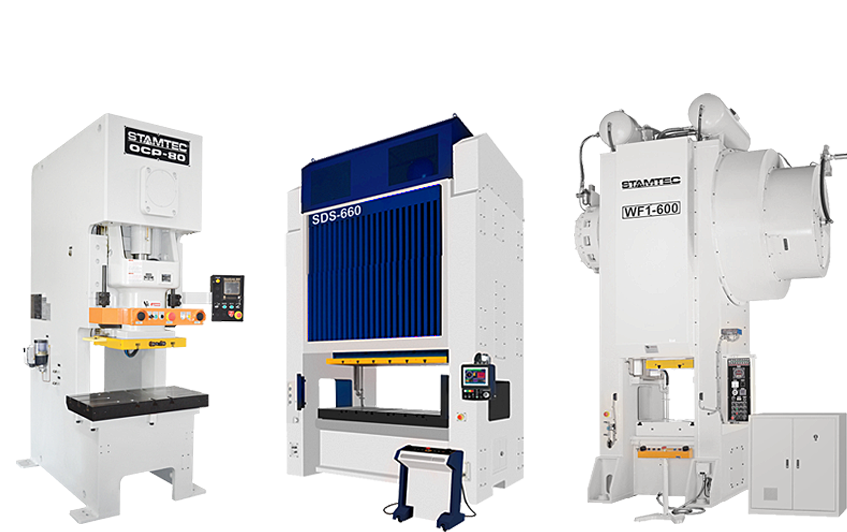
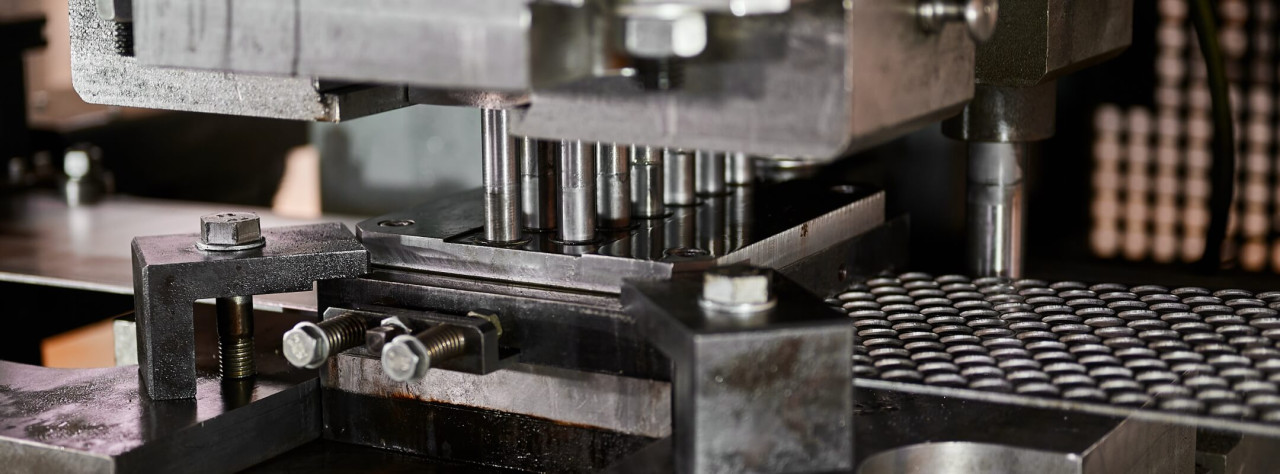
The days of relying solely on manual setups, guesswork, and trial and error are behind us. Today's stamping press operations are smarter, faster, and more connected than ever, thanks to a wave of cutting-edge tech reshaping how we approach production. We're talking about intelligent control systems, automation that makes life easier (not more complicated), and real-time data that works for you.
If you're in the business of turning sheet metal into precise parts, you already know how critical speed, accuracy, and uptime are. But here's the twist: you don't need to choose just one anymore. With modern metal stamping machines, you can have all three—and then some.
In this article, we'll explore how smart stamping technology is streamlining production, slashing inefficiencies, and giving manufacturers a serious edge. We'll also show you how Stamtec's innovations are leading the way, from smarter automation to data-driven performance tools that help you do more with less.
Table of Contents
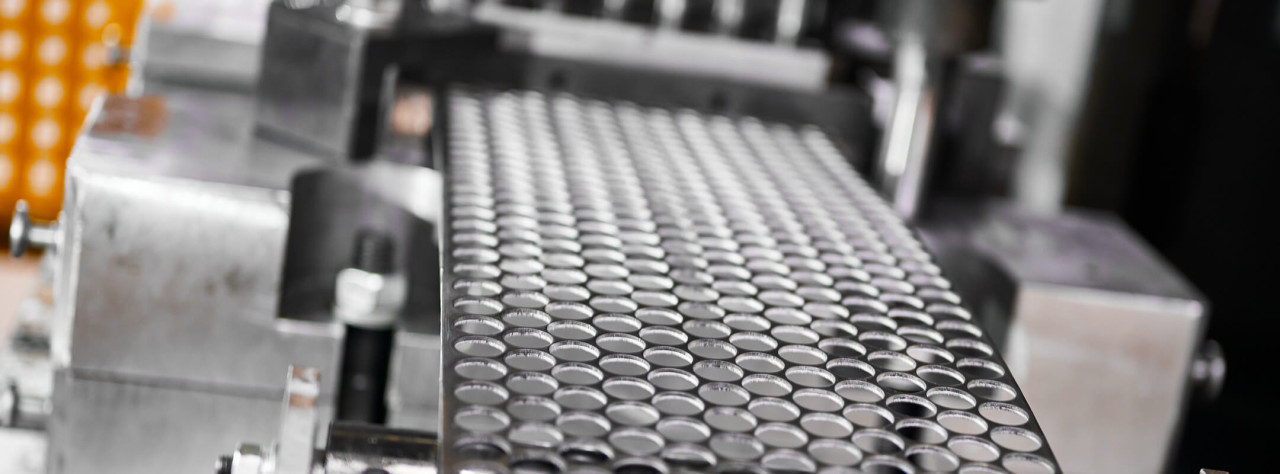
Not too long ago, a metal stamping machine meant brute force, loud presses, and manual everything. Operators relied on muscle memory, handwritten logs, and a whole lot of mechanical know-how to keep things moving. It got the job done, but it left a lot of room for error, downtime, and inefficiency.
Fast forward to today, and it's a different story. Smart tech has changed the game, turning the traditional industrial metal stamping machine into something much more powerful and precise.
Modern stamping machines can be mechanical, hydraulic, or servo-driven, each with its own strengths, depending on your application. Need blazing-fast speeds for high-volume runs?
Mechanical's your guy. Working with complex part geometries that demand flexibility? Servo's got your back. And if force control is your top priority, hydraulic presses are still holding their ground. The best part? Today's systems often combine these strengths with automation and intelligent feedback, giving you total control over every stroke.
Stamtec has been at the heart of this evolution, developing smarter, more capable industrial stamping press solutions that help manufacturers stay competitive without sacrificing quality or uptime. Whether you're producing automotive components, appliance parts, or precision electronics, having the right sheet metal stamping machine in your corner makes all the difference.
Manual processes have their place but can only take you so far. If you're still feeding sheet metal by hand and babysitting every cycle, you're missing out on the consistency and speed only automation can deliver.
Today's industrial stamping machines play nicely with a full lineup of automation tools. We're talking servo feeders, coil-handling systems, robotic arms, and quick die change systems—you name it. When these elements work together in harmony, you're running leaner, faster, and with fewer headaches.
Stamtec takes this to the next level by offering fully integrated press systems. Instead of cobbling together components from different vendors and hoping they sync, you get a streamlined solution built to work from the ground up. Need a high-speed line with automatic feed and stacking? No problem. Looking for a custom metal stamping machine setup that can handle frequent part changeovers without tanking your productivity? They've got that covered too.
The result? A sheet metal stamping machine that's the backbone of a smart, scalable production line. It reduces human error, minimizes material waste, and frees up your team to focus on what matters: quality control, throughput, and keeping things running smooth.
Gone are the days when you had to wait for a problem to show itself—like a part out of spec or a machine quietly eating up cycle time—before you could do anything about it. With real-time monitoring baked into today's smartest industrial stamping presses, you can spot issues the second they start (or, even better, before they happen at all).
Modern metal stamping machines are loaded with sensors and connected control systems that feed you a steady stream of data—think stroke speed, force curves, die alignment, uptime stats, and more. It's like having a digital co-pilot overseeing every move your press makes. And when you pair that with predictive maintenance tools, you're not just reacting—you're planning ahead.
Stamtec's press systems make it easy to tap into these insights. Our smart interfaces are a boon to operators and managers alike, offering intuitive dashboards that display everything from performance trends to error alerts. Instead of poring over spreadsheets or guessing what went wrong, you've got the answers in real time—on-screen, in plain language.
And here's where it really pays off: when you can see what's happening on the floor at any given moment, you make faster, smarter decisions. You minimize unplanned downtime, extend your equipment life, and keep production humming without missing a beat. Whether you're running one industrial metal stamping press or managing an entire fleet, real-time data turns your operation into a well-oiled, highly visible machine.
Even the smartest industrial stamping press in the world can't compensate for poorly designed tooling. Your press is only as good as the die it's working with—so if you're aiming for precision, longevity, and minimal downtime, your tooling needs to be just as sharp as your tech.
This is where strategic die design comes into play. We're talking tighter tolerances, stronger tool steels, better cooling, and modular components that make maintenance and swaps less of a headache. A well-optimized die reduces wear on the press, helps avoid misfeeds, and keeps your scrap rate comfortably low.
And here's where it gets even better: modern metal stamping machines work with your tooling—not just around it. Stamtec's presses, for example, come equipped with precise RAM guidance systems, programmable shut height settings, and intuitive interfaces that let you fine-tune stroke parameters to match the die's needs. That means less stress on the tool, longer tool life, and more consistent part quality across every run.
It's a win-win: your industrial metal stamping press works more efficiently, your dies last longer, and your parts stay within spec without the usual wear-and-tear drama. In high-volume stamping operations, that kind of synergy can save serious time and money.
Speed, power, and precision are great—but not at the expense of safety. Today's industrial stamping machines have smarter safety features that protect people and equipment without slowing production.
Let's start with the essentials: dual palm buttons, light curtains, e-stop zones, and safety interlocks. These aren't new, but modern systems make them smarter. For example, light curtains now integrate with control systems to pause the press instantly without derailing the entire cycle. Programmable safety zones ensure the machine responds only when it's safe—no more accidental cycles or risky resets.
At Stamtec, industrial metal stamping presses have these protections built in—not tacked on. Press controls comply with OSHA and ANSI standards, offering peace of mind without adding complexity to your workflow. Whether you're running a high-speed sheet metal stamping machine or a heavy-duty forge press, you'll find operator-friendly layouts, intuitive emergency systems, and clear feedback every step of the way.
It's one thing to talk about features—but what really matters is how those features perform where it counts: on the production floor. Across industries like automotive, appliance manufacturing, and industrial equipment, manufacturers are using smart metal stamping technology to solve real challenges. Less downtime. Better quality. More parts out the door.
For operations looking to scale up or replace aging equipment, Stamtec's has a premium forge press for sale that offers a solid investment. Built for reliability and long service life, these presses are ideal for high-volume stamping environments where uptime is non-negotiable.
When you're shaping tough metals into high-precision components, you need a stamping press that delivers serious tonnage—without sacrificing accuracy. Stamtec's Cold Forging Presses offer exactly that. They're built for strength, yes, but also for consistency and long-term durability, even under extreme loads.
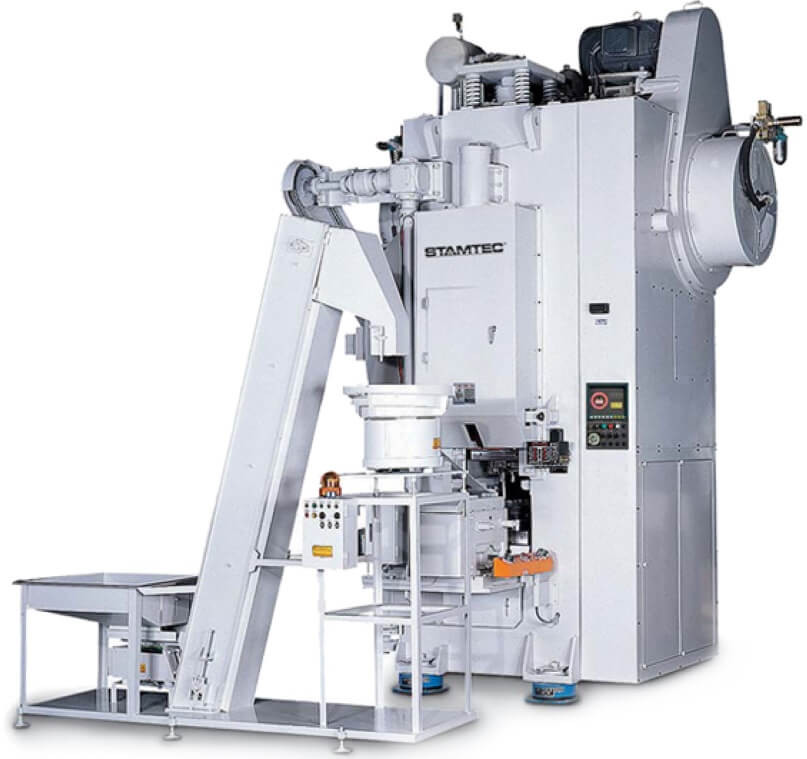
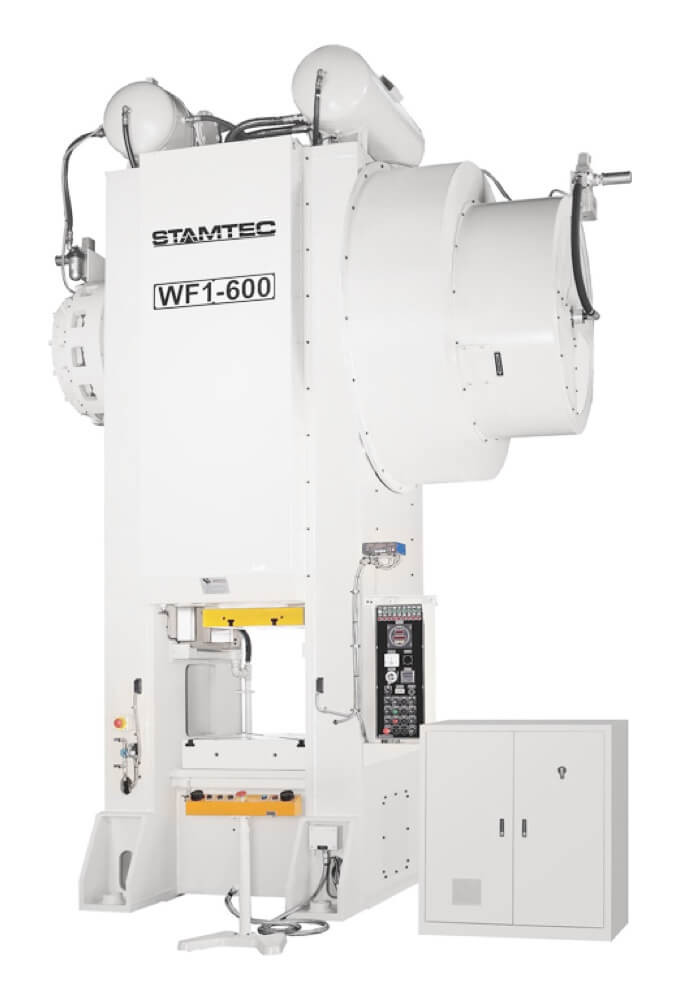
In hot forging, materials are formed at elevated temperatures. Stamtec's Warm/Hot Forging Presses thrive in these environments, with robust construction and customizable automation options that help manufacturers keep cycle times tight while managing heat and wear.
Need high-speed part production straight from coil stock? That's where the Blanking Line for Metal Processing shines. Integrated with feeders, straighteners, and decoilers, it's a complete system designed to reduce waste, optimize feed accuracy, and keep lines moving efficiently—all within a compact footprint.
If your current setup is holding you back—or you're just ready to level up—there's never been a better time to explore what a modern industrial stamping press from Stamtec can do. From intelligent automation to data-driven insights and precision-engineered performance, Stamtec has the tools to help you streamline your production and stay ahead of the curve. Talk to an expert, explore our press lines, or check out our current forge presses for sale to get started.
Explore Stamtec PressesStill have questions? You're not alone. Here are some of the most common things manufacturers want to know when upgrading or optimizing their stamping press operations.
Start with the material you're working with, the complexity of the part, and the size of the die. Mechanical presses are ideal for high-speed, repetitive operations, while hydraulic presses offer better control over force throughout the stroke—great for forming thicker or more intricate parts. Tonnage should always be calculated based on the part's geometry and material type, with a healthy safety margin to avoid overloading the press.
Modern stamping machines use PLCs, servo drives, and IoT-enabled sensors to sync up with feeders, robots, and coil-handling equipment. Real-time monitoring dashboards give operators and managers full visibility into press performance, cycle times, maintenance needs, and more—all of which help reduce downtime, streamline changeovers, and boost throughput.
Key safety features include dual palm controls, light curtains, emergency stop buttons, safety interlocks, and programmable safety zones. These features protect operators from accidental cycling, detect obstructions, and help ensure the press operates safely, reducing the risk of injury and equipment damage.
Use high-quality die materials, precision machining, and tight tolerances to ensure clean, accurate parts. When possible, incorporate guide posts, proper alignment systems, and quick-change modular tooling. Smart presses can assist by offering programmable shut heights and fine-tuned stroke control that aligns with your die's specific needs, reducing wear and tear.
Predictive maintenance systems analyze trends in vibration, temperature, pressure, and cycle data to identify issues before they become failures. With real-time data at your fingertips, you can schedule repairs during planned downtime, avoid unexpected shutdowns, and optimize your maintenance resources—keeping your industrial metal stamping machines running longer and smarter.